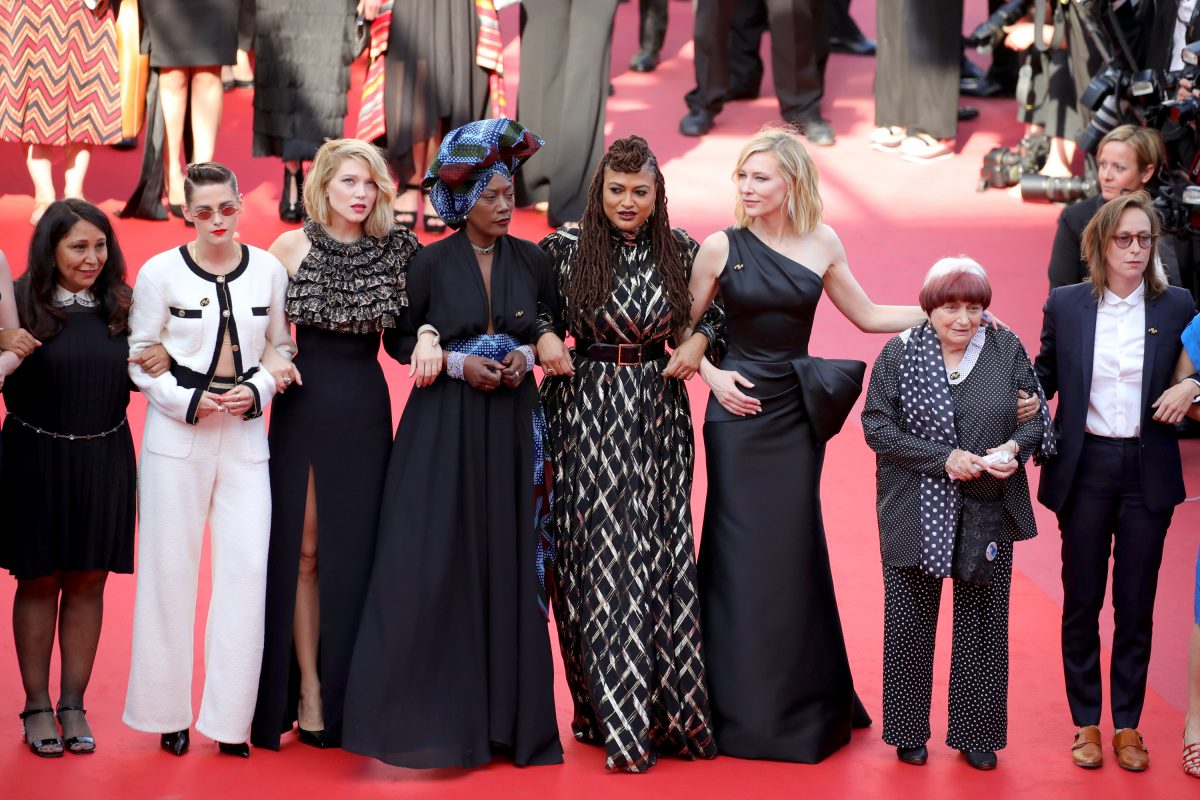2018’s Top-Grossing Films Featured an Increase in Inclusive Leads
Change is coming, slowly but steadily.

Dr. Stacy L. Smith of the the Annenberg Inclusion Initiative recently released a study on the 100 highest-grossing films of 2018, and they showed a marked improvement, even though some of the numbers still show room for improvement. This year, 40 films featured a woman in a co-lead or leading role, up from 32 films in 2017. Of those films, 11 featured a woman of color in those roles, which is nearly triple the number from 2017.
In terms of protagonists of color on the whole, 28 films featured a lead from an underrepresented group, which is a step up from 2017. Smith said in the study that “2018 offers hope that industry members have taken action to create content that better reflects the world in which we live, and the box office seems to have rewarded them for it. This data shows us that it is possible for change to be achieved—companies must not grow complacent but continue the progress they have made in 2019 and in the years to come.”
Smith also said, “It is encouraging that 2018 brought a 12-year high in the number of films with a female lead or co-lead driving the action. Perhaps most notably, we witnessed gains for women of color as leads or co-leads. While there is still a significant amount of change to be accomplished, this represents a step in the right direction toward intersectional inclusion in storytelling.”
This is both wonderful news and very revealing of remaining problems. 40 films featuring a female lead or co-lead is nearly 50%, but the numbers for women of color shouldn’t be that low; the fact 11 films is nearly triple what is was the previous year is deeply problematic.
While a female lead is progressive, white women have dominated the cinematic market for a long time. More women of color need to be cast in leading roles, because quite frankly, it’s exhausting seeing women who all look alike on the big screen. If cinema is representative of the world, then we need to reflect more diverse ideas of womanhood.
Similarly, 28 films featuring a lead from an underrepresented racial or ethnic group is also a step up, as it means over a quarter of films that raked in box office gold didn’t center on white characters. Still, that number could be higher.
Two of the biggest box office smashes this year, Black Panther and Crazy Rich Asians, featured casts that were either entirely comprised of actors of color or only featured white actors in a couple supporting roles. This is an important step forward, because not only do those films represent an important perspective long ignored by Hollywood, but they show that audiences from across market divides will pay to see new perspectives onscreen.
It will be interesting to see how Hollywood progresses from here. The box office line about how audiences won’t pay to see films that aren’t about white men doesn’t work any longer, now that many of the top grossing films each year are led by diverse casts. The question becomes whether Hollywood will continue to change with the times or continue to mostly work with white directors to tell stories about white men.
Deadline’s article on the study doesn’t talk about whether or not these films include LGBTQIA+ characters. I cannot think of a film with a trans protagonist that was released in cinemas last year besides Girl, which is perhaps the area for the next great push for representation.
Including more LGBTQIA+ characters from all of the letters of the acronym is incredibly important to representation, and hiring queer and trans actors is also important in terms of representation. We need to stop having cis actors playing trans characters, full stop. We also need to push for more positive disabled representation in films, and support disabled actors.
The key to continuing Hollywood’s positive trend of representation is to make sure that all facets of media are more representative of different voices. Hire directors who aren’t all white, cis, able-bodied men, and make your casts inclusive, too. Hire more journalists and critics who bring new perspectives to films.
We can change Hollywood for the better if we continue to push for representation in all facets of media production and release. It takes studies like this to bring it to the forefront of discussion, and we need to keep having these discussions until things change.
(via Deadline, image: Andreas Rentz/Getty Images)
Want more stories like this? Become a subscriber and support the site!
—The Mary Sue has a strict comment policy that forbids, but is not limited to, personal insults toward anyone, hate speech, and trolling.—
Have a tip we should know? tips@themarysue.com